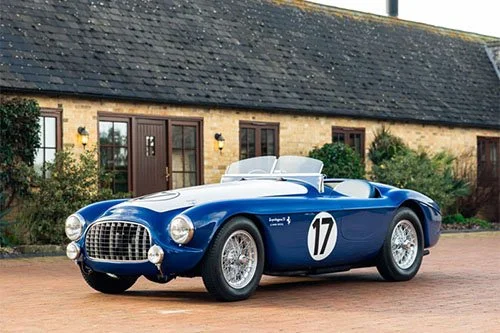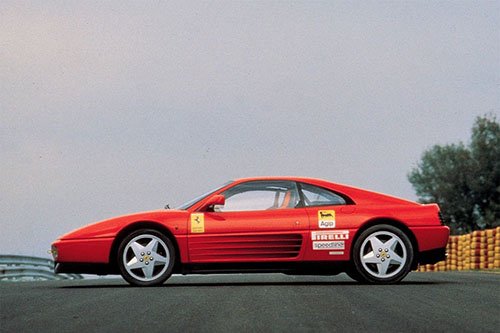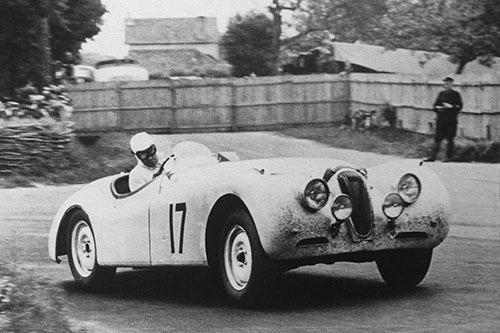Guide: Ferrari Pininfarina Rossa 2000
Background
As had been the case for Pininfarina’s 50th anniversary back in 1980, the Turin design studio celebrated their 70th anniversary by producing a one-off Ferrari Speciale.
The two firm’s had been inextricably linked to one another since 1951 when Enzo Ferrari signed an agreement with Battista Pininfarina that saw the highly regarded coachbuilder become Ferrari’s carrozzeria of choice. From that point on, nearly every production model that emerged from Maranello was dressed in a Pininfarina body.
Enzo Ferrari’s choice ultimately proved a good one; while the likes of Vignale, Bertone, Ghia and Touring frequently created the most avant garde machinery, Pininfarina’s more elegant, more conservative approach to automotive styling yielded arguably the 20th century’s most lauded road car designs.
Prior to this latest machine, Pininfarina’s most recent Ferrari styling concept had been the Testarossa-based Mythos that broke cover at the Tokyo Motor Show in 1989. Since then, the Turin studio had penned an array of handsome machinery that bore the Cavallino Rampante.
Recent hits included the 512 TR, 456 GT, F355, F50, 550 Maranello and 360 Modena. However, during this time there had also been the odd miss such as 1994’s F512 M which was something of an unholy mess.
Pininfarina chose to base their 70th anniversary special on the 550 Maranello: a traditional front V12-engined two seat Gran Turismo that harked back to models like the 275 GTB and 365 GTB/4 Daytona.
Although some critics had been surprised at Ferrari’s decision to abandon the mid-engined layout for their flagship two-seat production car, the 550 Maranello redefined what was possible from the front-engined layout and Ferrari haven’t looked back since.
Pininfarina unveiled the 550 Barchetta-based Rossa 2000 at the Turin Motor Show in June 2000. The evocative design was inspired by Ferrari’s iconic front-engined sports racing cars of the late 1950s and early 1960s.
Bodywork
Among the Rosso 2000’s most exciting features was its cut-down single piece windscreen. Corresponding door windows swept round to the rear deck and fully enveloped the cockpit.
Behind the seats were hollow streamlined headrests. In between was a transverse stabilising fin that housed a high level brake light and a rear view camera.
A long sloping nose incorporated a pair of ultra modern light units with highly polished bezels. Lower down, the jutting primary intake was accessorised with a traditional egg crate grille and flanked by a pair of recessed cooling apertures.
The hood profile was so low that a large central cut out was required to accommodate the 550’s V12 engine.
Down each flank, the body was cutaway under the front fender line in a similar fashion to the original Ferrari 250 Test Rossa. Pininfarina also added a distinctive stabilising fin upon which the side repeater was mounted.
The doors did not have conventional handles and had to be opened from a lever inside the cockpit.
At the back was a tightly cropped tail with a trio of cut outs. Pininfarina incorporated rear lights that broke through the body at the trailing edge. This arrangement was subsequently copied on the Ferrari Enzo, F430 and 612.
Interior
Inside, Pininfarina painted most of the surfaces red to match the exterior.
The driver and passenger zones were fronted by unusual cowls complete with grab handles for both occupants. On the driver’s side were a trio of semi-exposed gauges set within chrome bezels. Switchgear was limited to a small bank of natural alloy buttons to the driver’s right. To the left was a traditional engine start lever.
The steering wheel was a custom three-spoke item trimmed in a mixture of black leather and natural alloy.
An exposed competition-style gear shift was mounted on the transmission tunnel. Ahead of this was an LCD screen for the rear view camera.
Bucket seats with four-point harnesses were trimmed in triple-tone grey and black to match the cowled driver and passenger zones.
The only other upholstery was a pair of small door inserts.
Chassis
The Rossa 2000 was based on a prototype 550 Barchetta platform which had been suitably reinforced compared to the fixed head Maranello variant.
The chassis was a traditional tubular steel affair with an extremely rigid central cell and a 2500mm wheelbase (100mm less than the four-seat 456 GT from which it was derived).
Suspension was via independent double wishbones with co-axial coil springs over gas-filled telescopic dampers. Anti-roll bars were used at either end. Driver-operated electronically-controlled dampers offered a choice of Normal and Sport settings.
Servotronic speed sensitive power steering was fitted along with four-channel ABS that integrated with a switchable traction control system.
All four corners used ventilated discs and four-piston light alloy calipers. The front discs had a 330mm diameter and those at the rear measured 310mm.
Custom five-spoke alloy wheels were given a flashy chrome finish to match some of the other exterior and interior details.
Engine / Gearbox
The Tipo F133 A engine used in the standard 550 Maranello was an updated version of the DOHC 5.5-litre 65° V12 found in the 456 GT. Compared to the 456, the 550 most notably came with redesigned cylinder heads and a variable length induction system.
Cast alloy was used to manufacture the cylinder block, the four-valve heads, the sump and sundry other components. The alloy cylinder liners were treated with Nikasil to reduce heat and friction. Forged alloy pistons were sourced from Mahle and hooked up to titanium alloy connecting rods.
As per the 456 GT, dry-sump lubrication was employed. The compression ratio was now 10.8:1 (compared to 10.6:1 on the 456).
The engine management system was Bosch Motronic M5.2.
Variable back pressure exhausts were similar to those used by the F50.
Displacement was identical to the 456 GT: 5474cc thanks to a bore and stroke of 88mm and 75mm respectively. However, thanks to the various upgrades, peak output was substantially improved.
The 550 Maranello engine pumped out 485bhp at 7000rpm compared to 442bhp at 6250rpm.
The torque rating went from 406lb-ft at 4500rpm to 419lb-ft at 5000rpm.
The only gearbox offered on the 550 was a rear-mounted six-speed manual. Transmission was through a single-plate clutch and limited-slip differential.
Weight / Performance
Although the Rossa 2000 was a fully operational design concept, no weight or performance figures were ever published.
Subsequent History
After its appearance at the 2000 Turin Motor Show, the Rossa 2000 went into the Pininfarina Museum where it resides today.
Text copyright: Supercar Nostalgia
Photo copyright: Ferrari - https://www.ferrari.com & Pininfarina - https://pininfarina.it





































